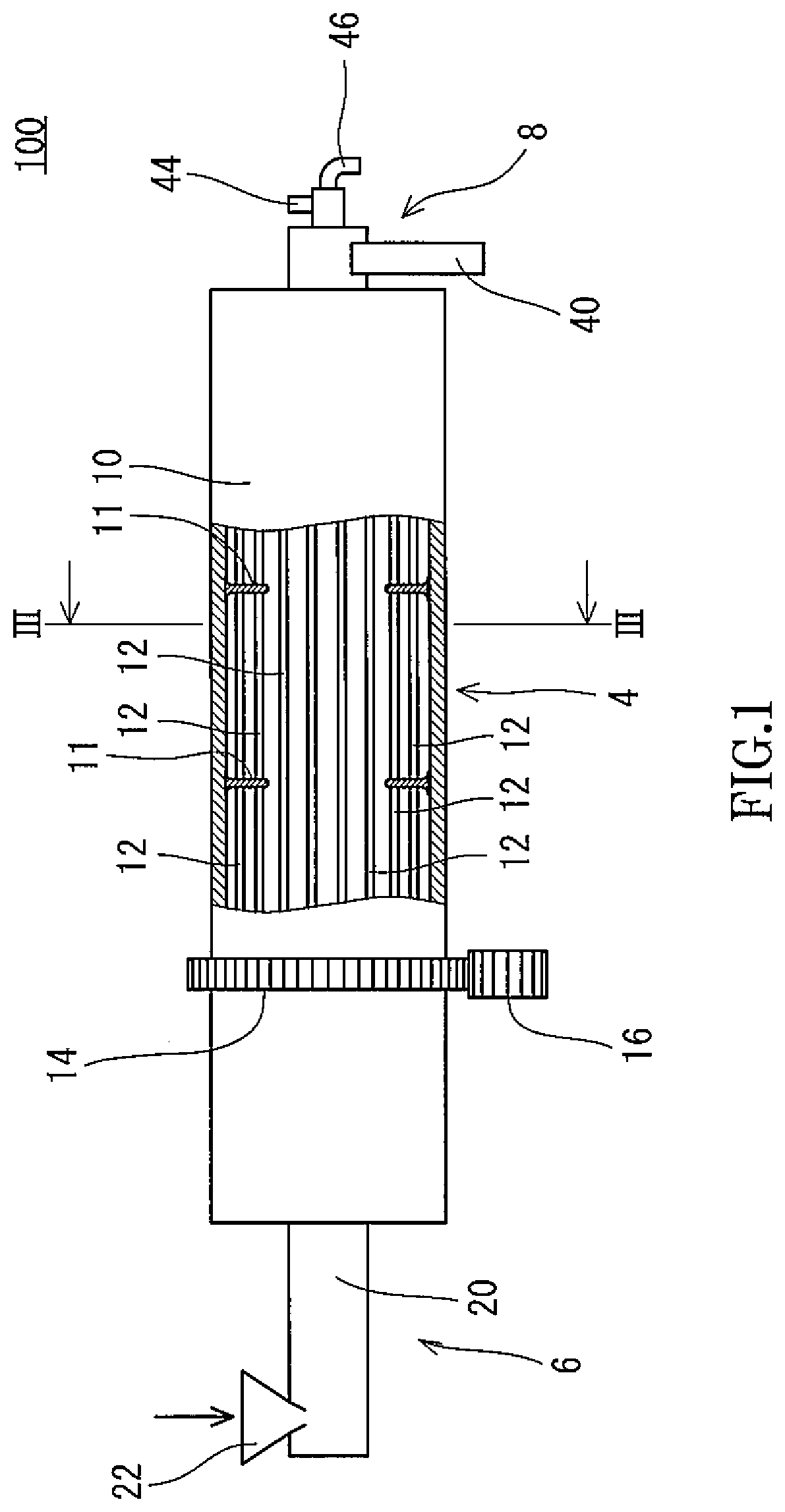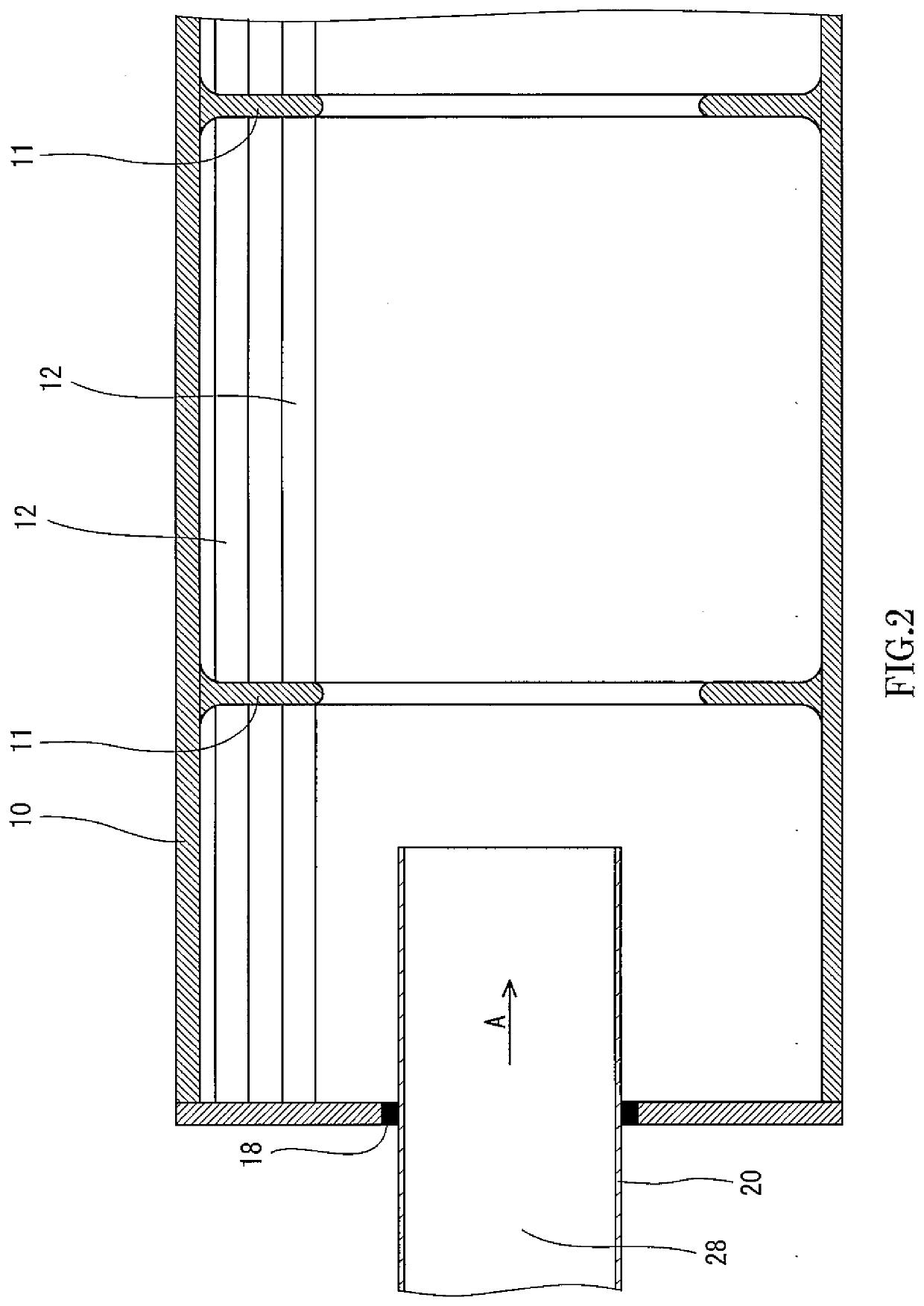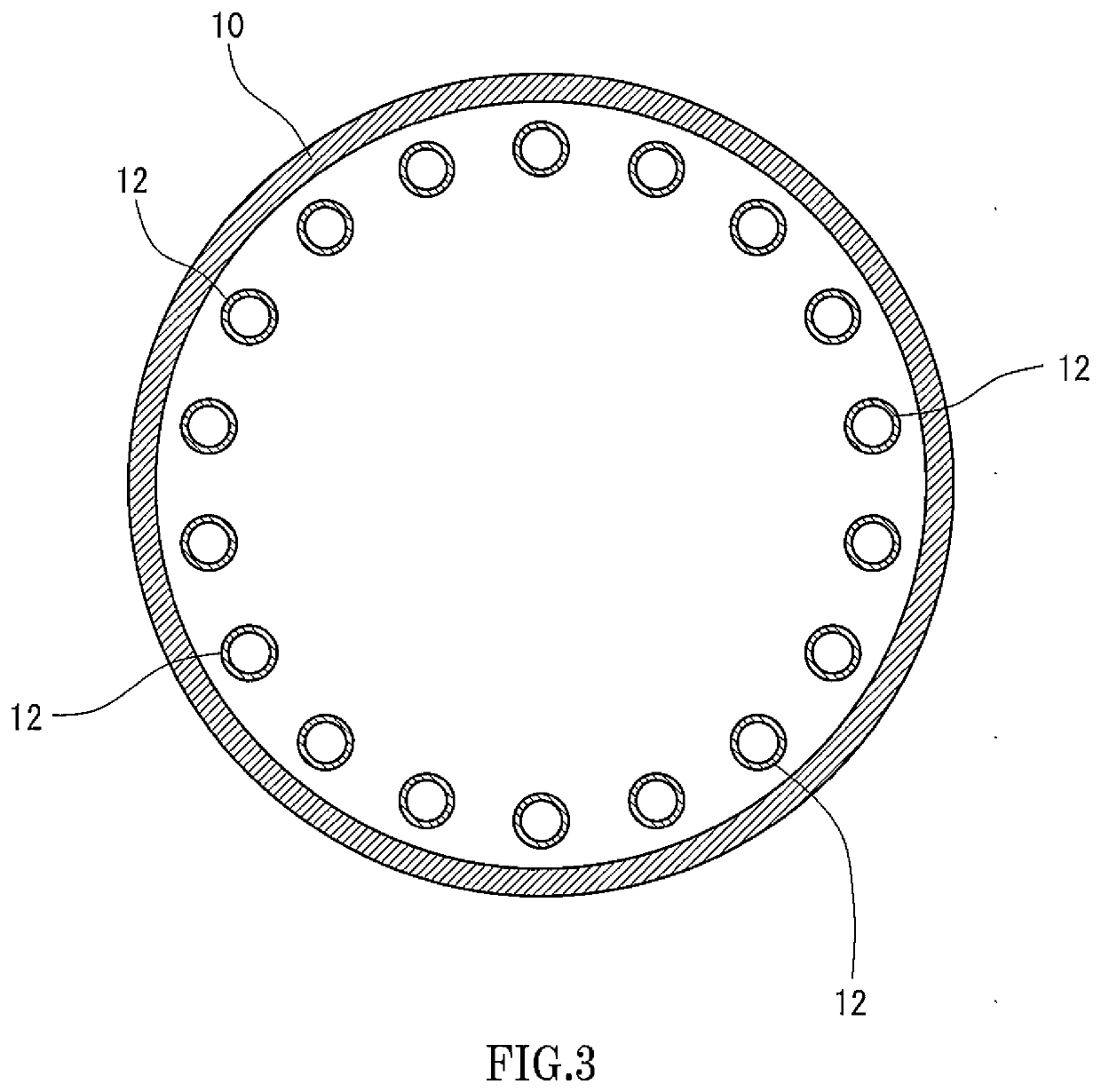Method for producing water-absorbent resin particles
- Summary
- Abstract
- Description
- Claims
- Application Information
AI Technical Summary
Benefits of technology
Problems solved by technology
Method used
Image
Examples
production example 1
[0305]Prepared was a monomer aqueous solution containing 300 parts by mass of acrylic acid, 100 parts by mass of a 48% by mass sodium hydroxide aqueous solution, 0.61 parts by mass of polyethylene glycol diacrylate (average number n: 9), 16.4 parts by mass of a 0.1% by mass trisodium diethylenetriamine pentaacetate aqueous solution, and 273.2 parts by mass of deionized water.
[0306]Next, the monomer aqueous solution adjusted to 38° C. was continuously supplied by using a metering pump, and then 150.6 parts by mass of a 48% by mass sodium hydroxide aqueous solution was continuously mixed thereinto by line mixing. At this time, the temperature of the monomer aqueous solution rose to 87° C. due to heat of neutralization.
[0307]Furthermore, 14.6 parts by mass of a 4% by mass sodium persulfate aqueous solution was continuously mixed by line mixing, and then the mixture was continuously supplied to a continuous polymerization machine having a flat polymerization belt with weirs at both edge...
production example 2
[0310]A strip-shaped hydrous gel (1b) was obtained by performing the same operations as in Production Example 1. Next, the hydrous gel (1b) was put into a screw extruder, and gel-crushing was performed. As the screw extruder, a meat chopper having a screw shaft outer diameter of 86 mm and provided with a porous plate having a diameter of 100 mm, a pore diameter of 9.5 mm, and a thickness of 10 mm at an end portion, was used. Gel-crushing (first gel-crushing) was performed while supplying water and steam simultaneously with the hydrous gel (1b). Regarding an obtained particulate hydrous gel (1d), the solid content rate was 49% by mass (the moisture content was 51% by mass), the average particle diameter dl in terms of solid content was 2000 μm, and the proportion of particles having a particle diameter of less than 150 μm was about 4.9% by mass. In addition, the polymerization ratio of the particulate hydrous gel (1d) was 98.6%, the CRC thereof was 34 g / g, and the water-soluble conte...
example 1
[0312]With respect to 100 parts by mass of the particulate dried polymer (A1) at 60° C. obtained in Production Example 1, a surface-crosslinking agent solution containing 0.025 parts by mass of ethylene glycol diglycidyl ether, 0.3 parts by mass of ethylene carbonate, 0.5 parts by mass of propylene glycol, and 2.0 parts by mass of deionized water was spray-mixed using a continuous high-speed stirring drying machine (turbulizer manufactured by HOSOKAWA MICRON CORPORATION) to obtain humidified material (B1).
[0313]The obtained humidified material (B1) was heated using a rotary heating device with heating tubes. The drying machine includes a cylindrical rotary container (inner capacity: 100 L) having 10 heating tubes extending in the rotation axis direction thereof and two obstructive walls (donut-shaped partition plates each having one circular opening in a center portion thereof, opening ratio: 8%) therein. In addition, the drying machine has, at a takeout port thereof, a donut-shaped...
PUM
| Property | Measurement | Unit |
|---|---|---|
| Temperature | aaaaa | aaaaa |
| Temperature | aaaaa | aaaaa |
| Fraction | aaaaa | aaaaa |
Abstract
Description
Claims
Application Information
 Login to View More
Login to View More - R&D
- Intellectual Property
- Life Sciences
- Materials
- Tech Scout
- Unparalleled Data Quality
- Higher Quality Content
- 60% Fewer Hallucinations
Browse by: Latest US Patents, China's latest patents, Technical Efficacy Thesaurus, Application Domain, Technology Topic, Popular Technical Reports.
© 2025 PatSnap. All rights reserved.Legal|Privacy policy|Modern Slavery Act Transparency Statement|Sitemap|About US| Contact US: help@patsnap.com



